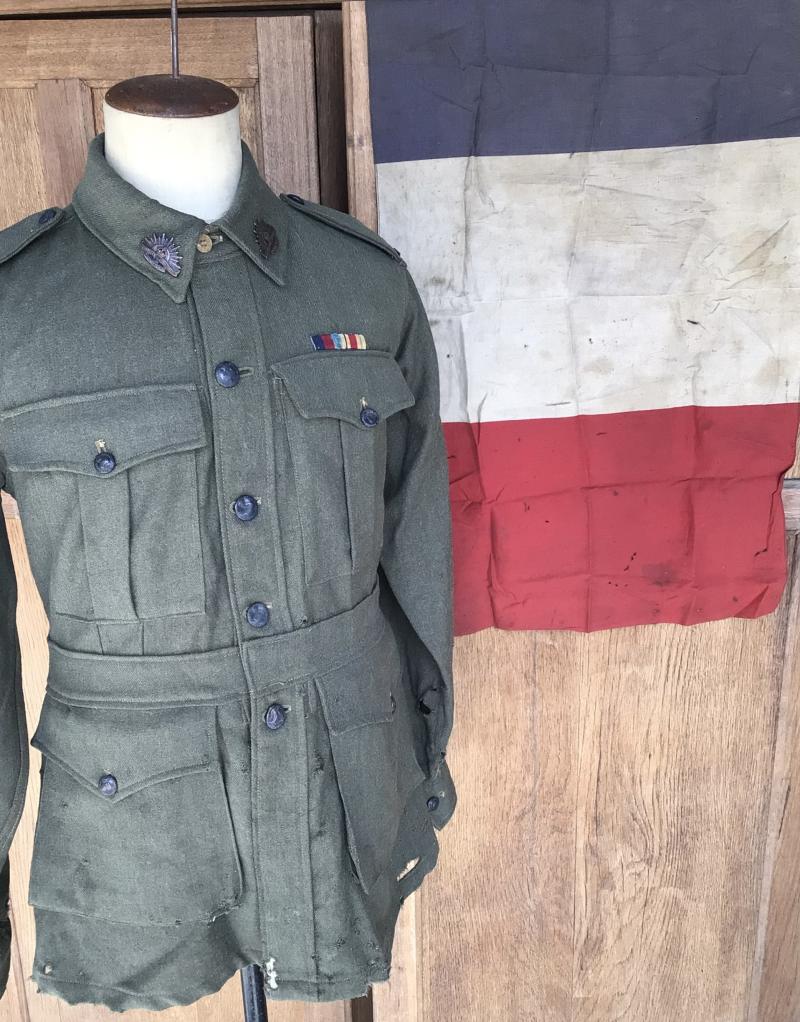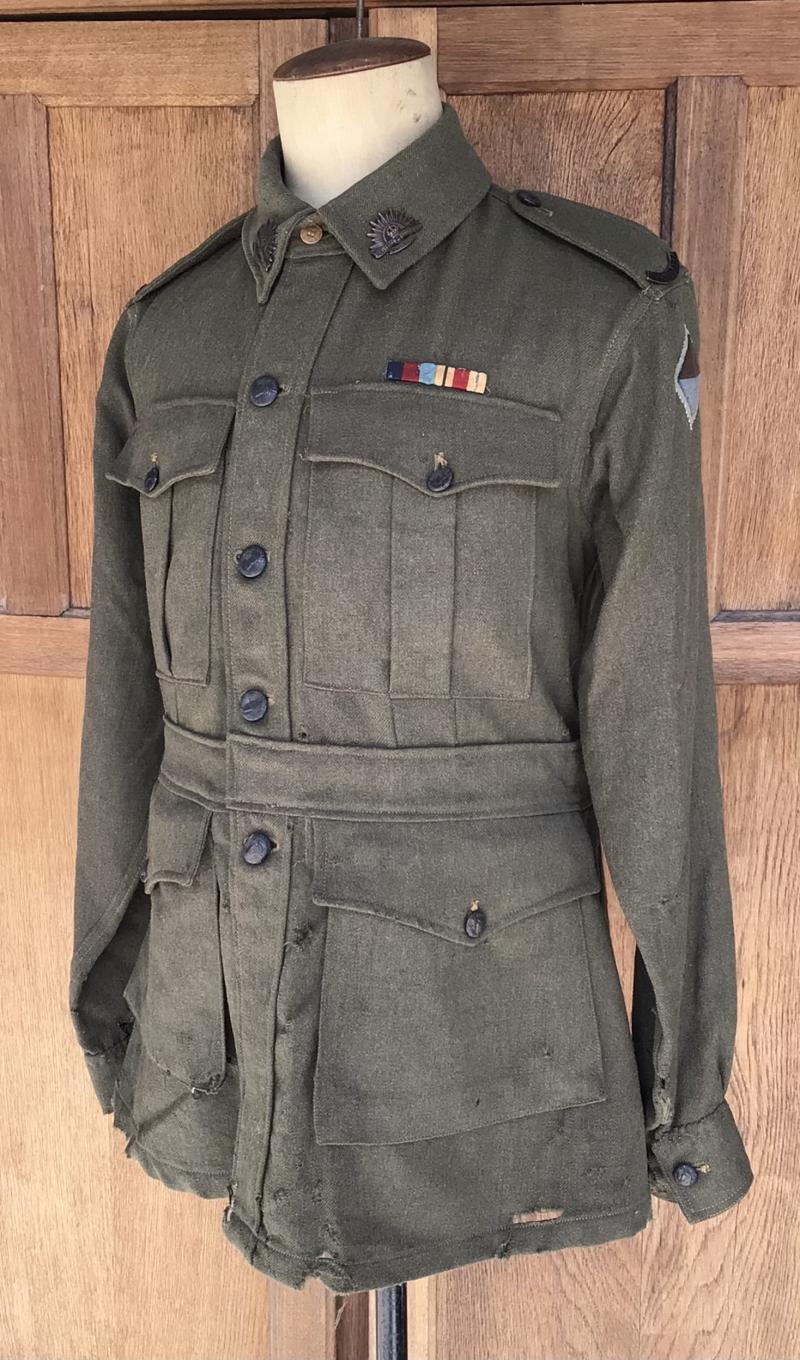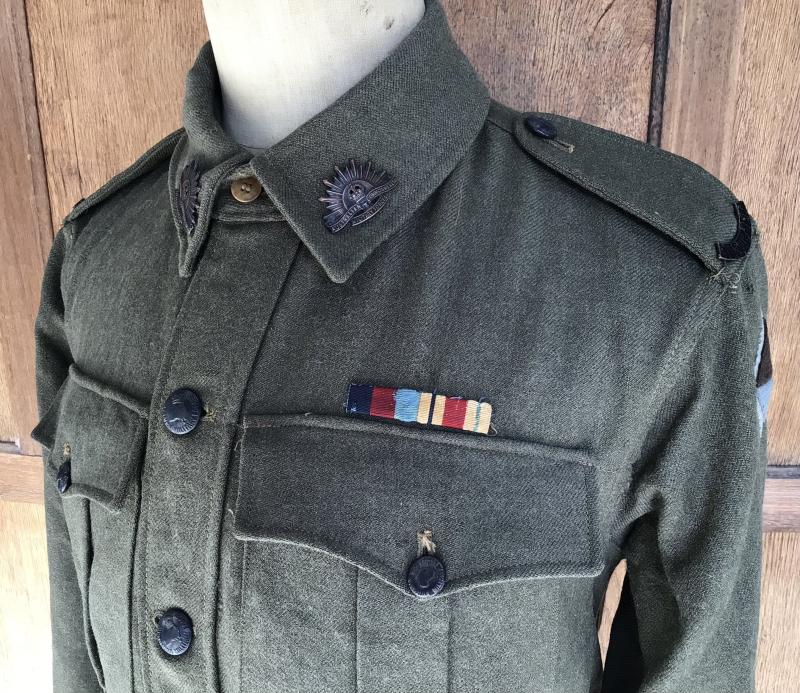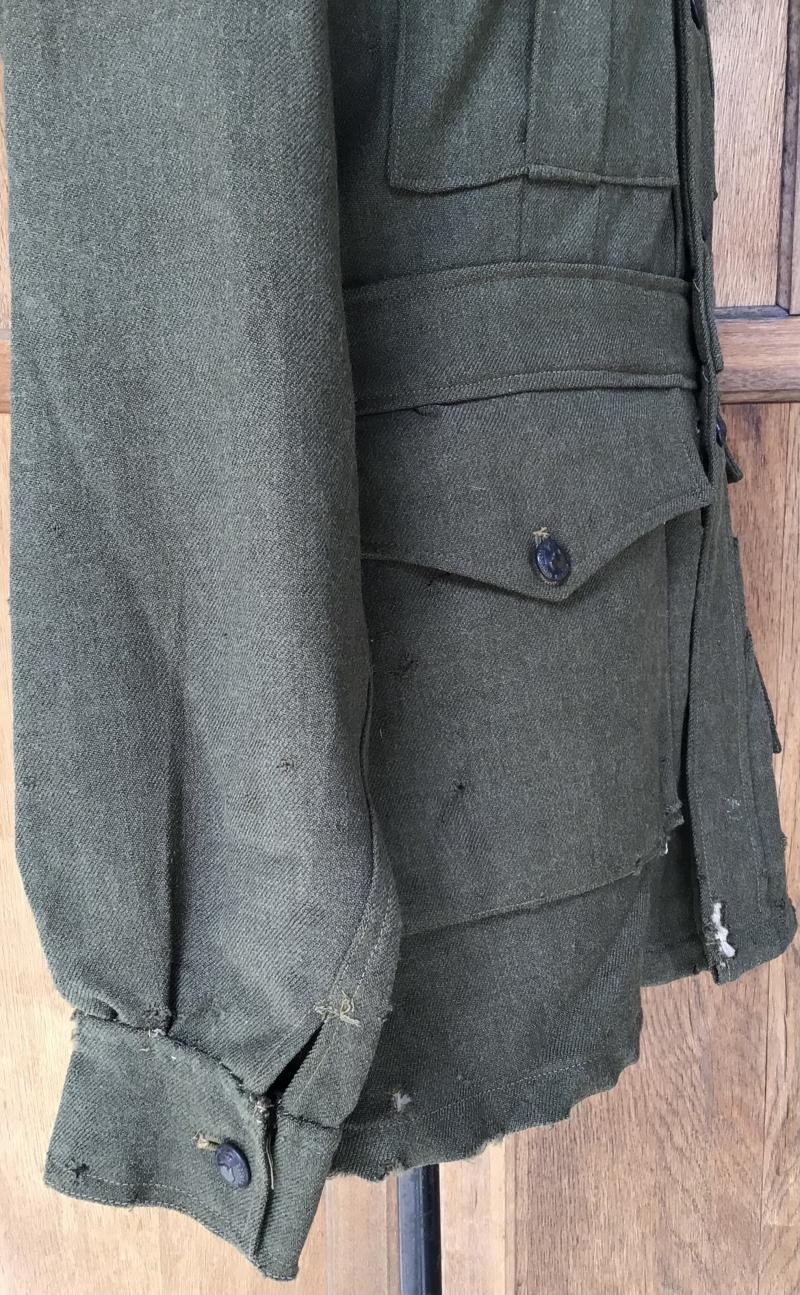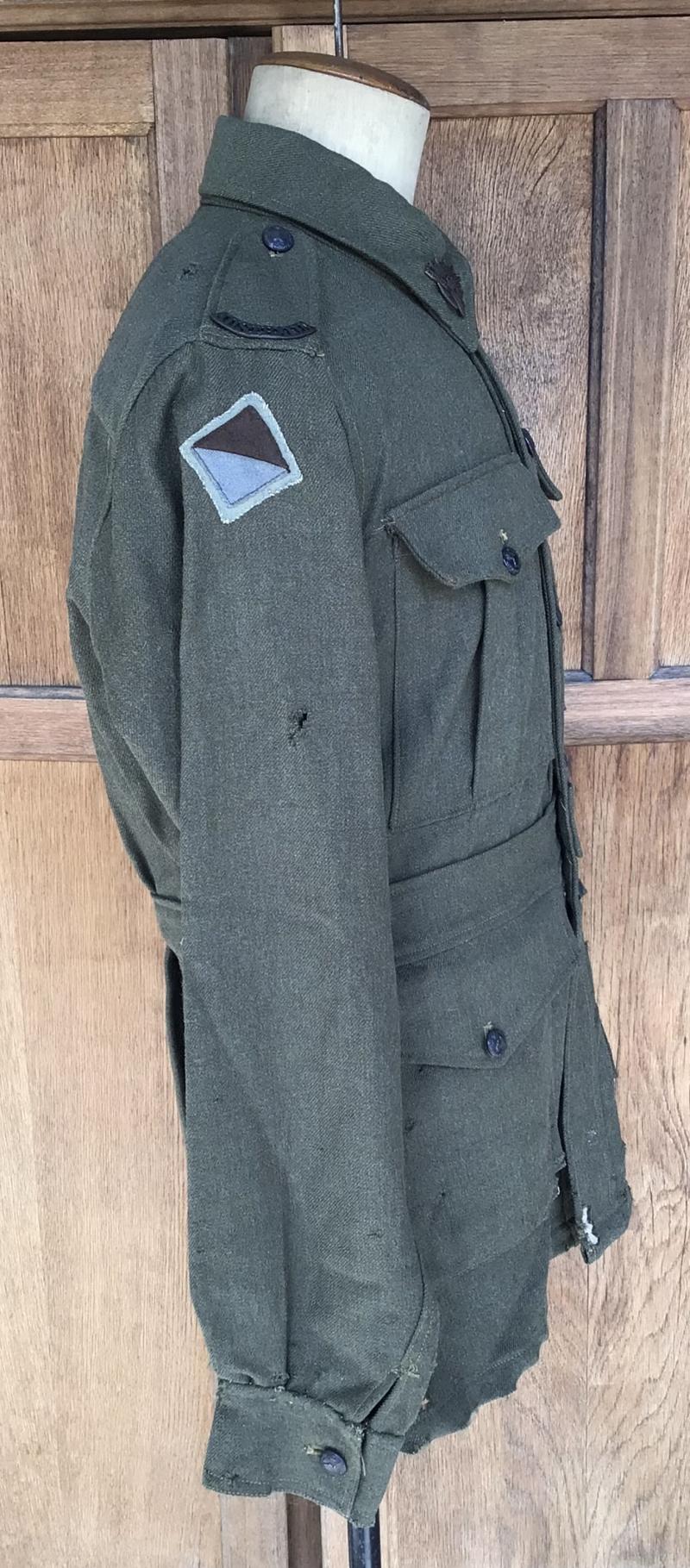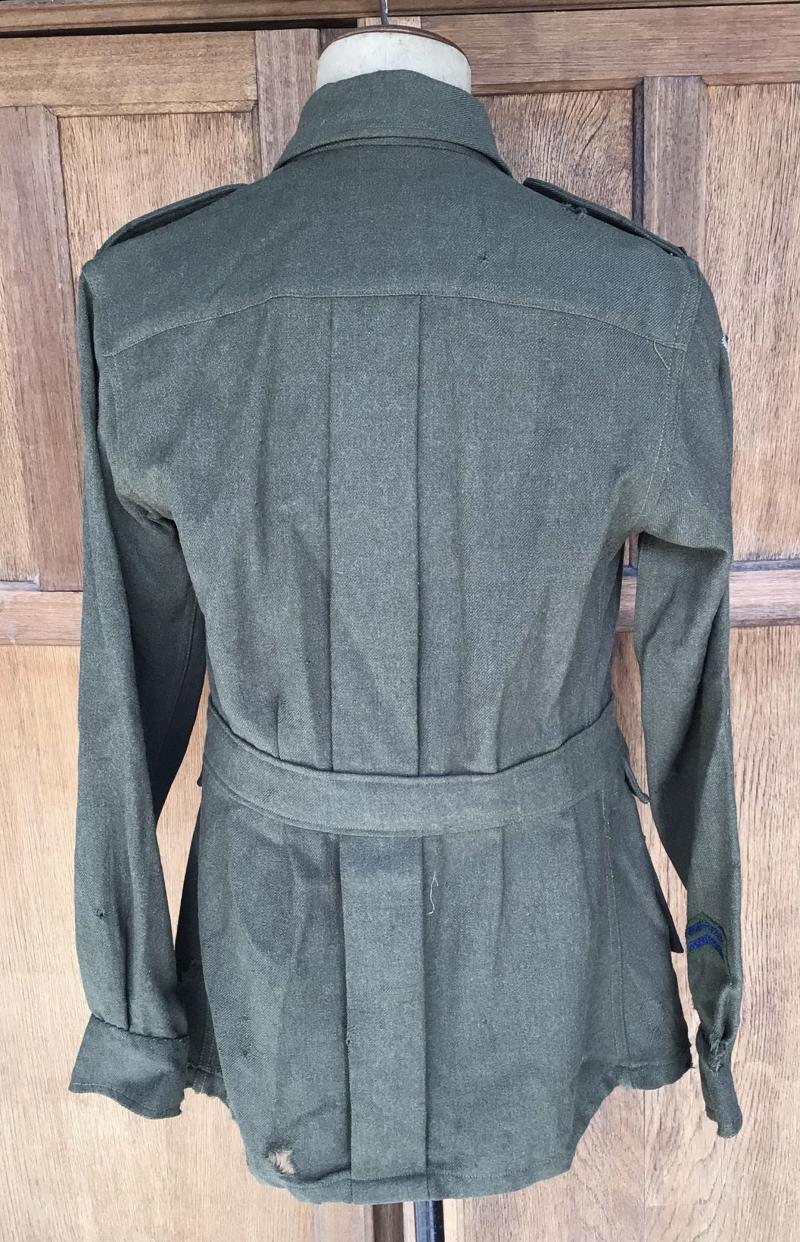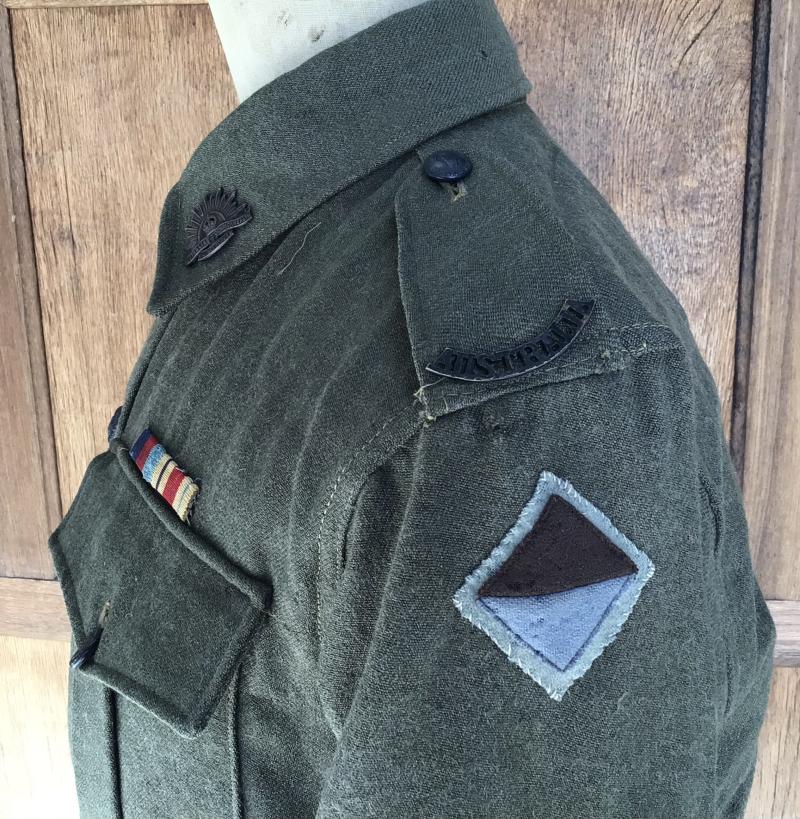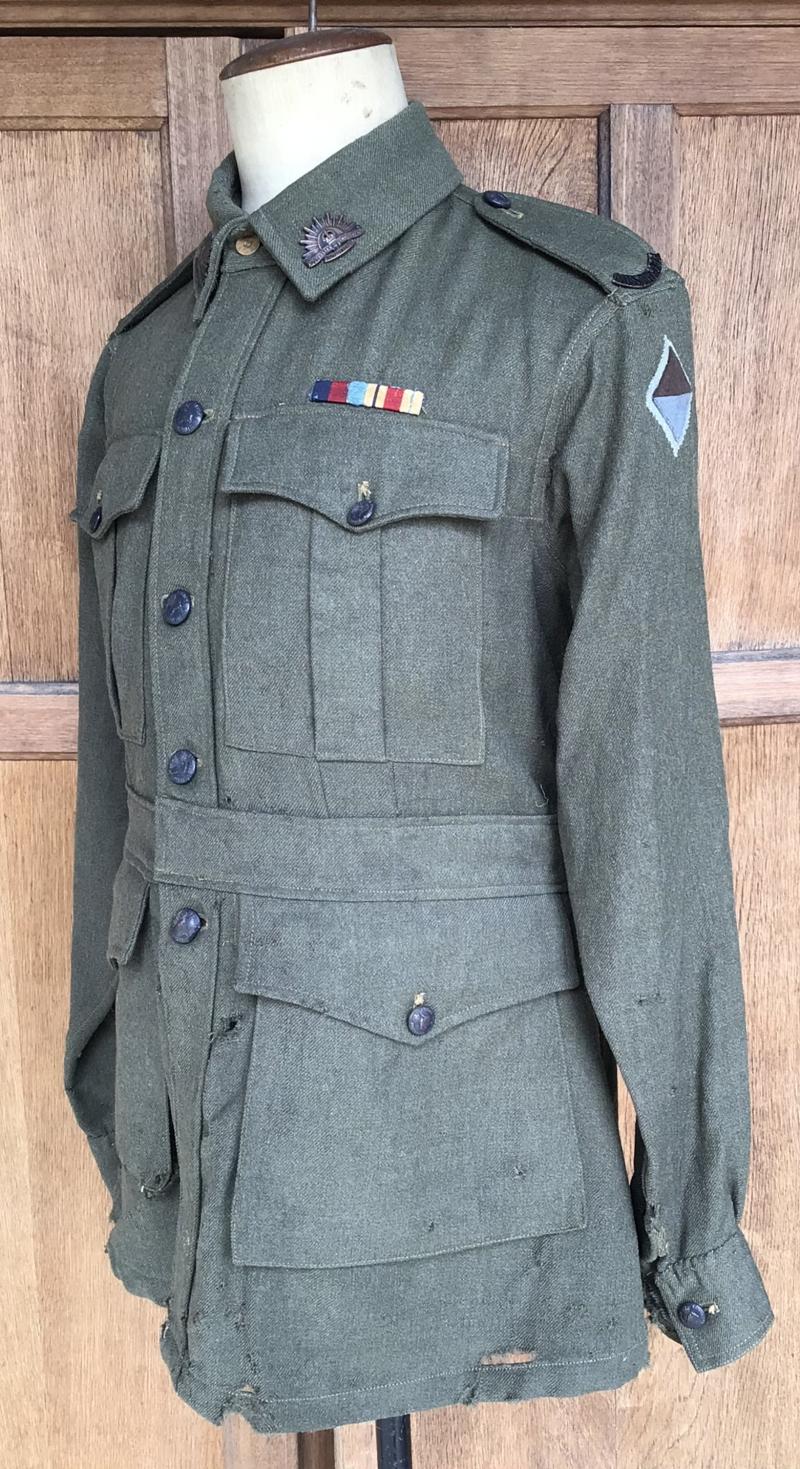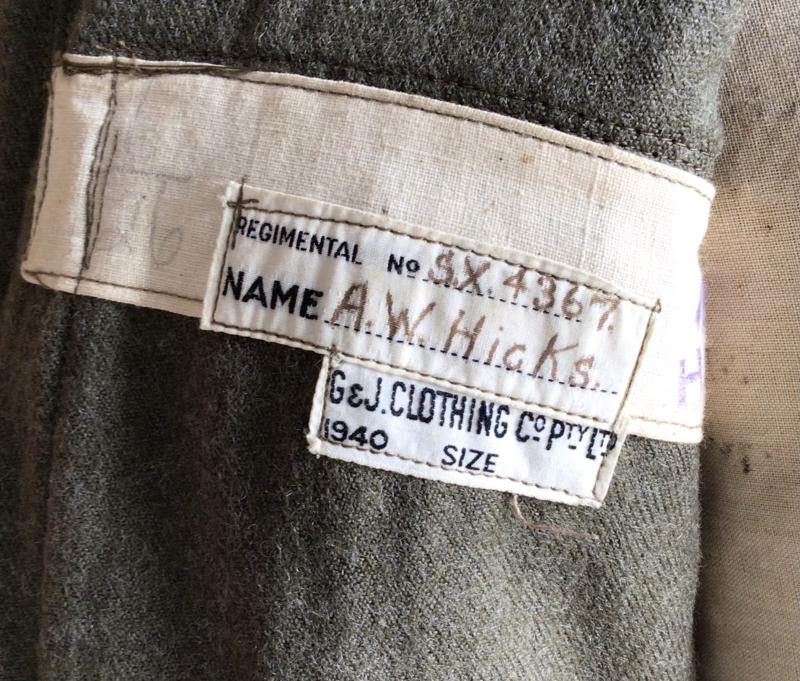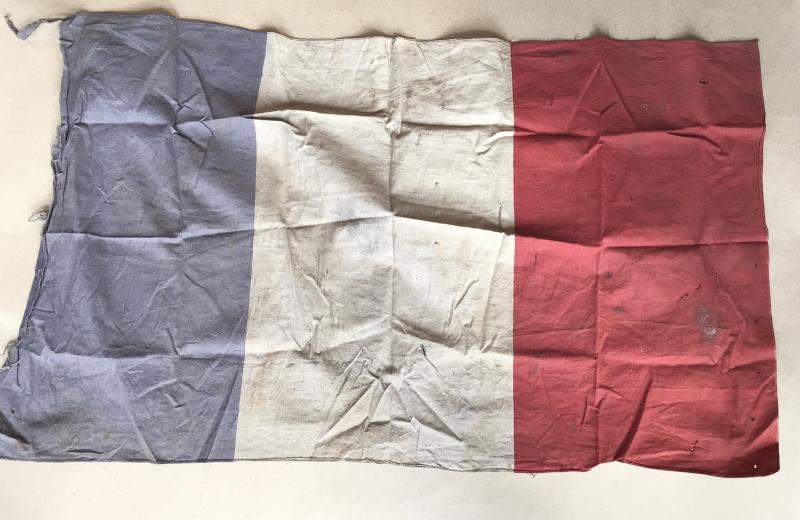Australia WW2 Named Syria Campaign 2/27th Bn Tunic and Captured Vichy French Flag
Army other ranks khaki wool serge four pocket tunic dated 1940.
Has a lot of moth and wear along the bottom edge of the cuffs and all the way around the skirt. An,Ed on the inside makers label and dated 1940. Has all its oxidized AMF buttons, rising sun collar badges, and nationality shoulder titles. Cloth two bar Overseas servcie chevrons, two place ribbon bar and colour patches to both shoulders for the 2/27th Infantry Battalion. Appealing wear consummate with age and ware. As worn during the Syrian campaign.
Comes with a souvenired small Vichy French Flag. Screen printed cotton, this with overall soiling.
The 2/27th Battalion was raised as part of the all-volunteer Second Australian Imperial Force (2nd AIF) at Woodside Barracks, South Australia, on 7 May 1940. Along with the 2/14th and 2/16th Battalions, it was attached to the 21st Brigade, which formed part of the 7th Division, the second infantry division raised as part of the 2nd AIF. With an authorised strength of 910 men of all ranks,1 it was organised into four rifle companies designated 'A' to 'D' with a battalion headquarters, regimental aid post, and a headquarters company consisting of specialist signals, anti-aircraft, mortar, carrier, pioneer and administrative platoons. The battalion's first commanding officer was Lieutenant Colonel Murray Moten, a former Militia officer who had previously commanded the South Australian-based 48th Battalion.
The colours chosen for the battalion's unit colour patch (UCP) were the same as those of the 27th Battalion, a unit which had served during World War I before being raised as a Militia formation in 1921. These colours were brown over light blue, in a diamond shape, although a border of gray in an oval shape was added to the UCP to distinguish the battalion from its Militia counterpart. After undertaking rudimentary training, in October 1940 the battalion was moved by train to Melbourne, where it embarked for overseas aboard the transport Mauretania. Sailing via India, the 2/27th briefly made camp at Deolali, outside of Bombay for a week before embarking on the Takliwa for the rest of the journey to the Middle East. The battalion arrived in Egypt on 24 November, making landfall at Kantara moving to Julius Camp in Palestine for further training.
After completing its training in Palestine, the 2/27th Battalion was moved to Egypt–Libya border in April 1941. There, along with the rest of the 21st Brigade, they undertook defensive duties, occupying defensive positions around Mersa Matruh and Maaten Bagush in anticipation of the German and Italian advance. The battalion remained there until late May, and although they were not directly involved in ground combat, they experienced their first attacks by German aircraft. They were subsequently returned to Palestine ahead of the battalion's first combat assignment, the invasion of Syria and Lebanon, which began in early June. During the subsequent fighting against Vichy forces, the 2/27th took part in the drive up the Lebanon coast, taking part in several engagements including fighting around Adloun on 11 June and Miye-ou-miye on 13–14 June as part of the capture of Sidon, which fell on 15 June. The following month, the battalion also took part in the Battle of Damour. After five weeks of fighting an armistice was signed on 12 July. Following the surrender of Vichy forces, the unit undertook garrison duties around Hammana, near Beirut, and Bakhaoun in the Tripoli sector, as part of the Allied occupation force, remaining there until January 1942. At the end of the campaign, Moten was decorated and promoted;17 he was replaced as commander of the 2/27th by Lieutenant Colonel Geoffrey Cooper.
Following Japan's entry into the war in December 1941, the Australian government began pressing for some of the AIF forces in the Middle East to be returned to Australia, to help defend against the Japanese advance in the Pacific.
Code: 1325
650.00 AUD

